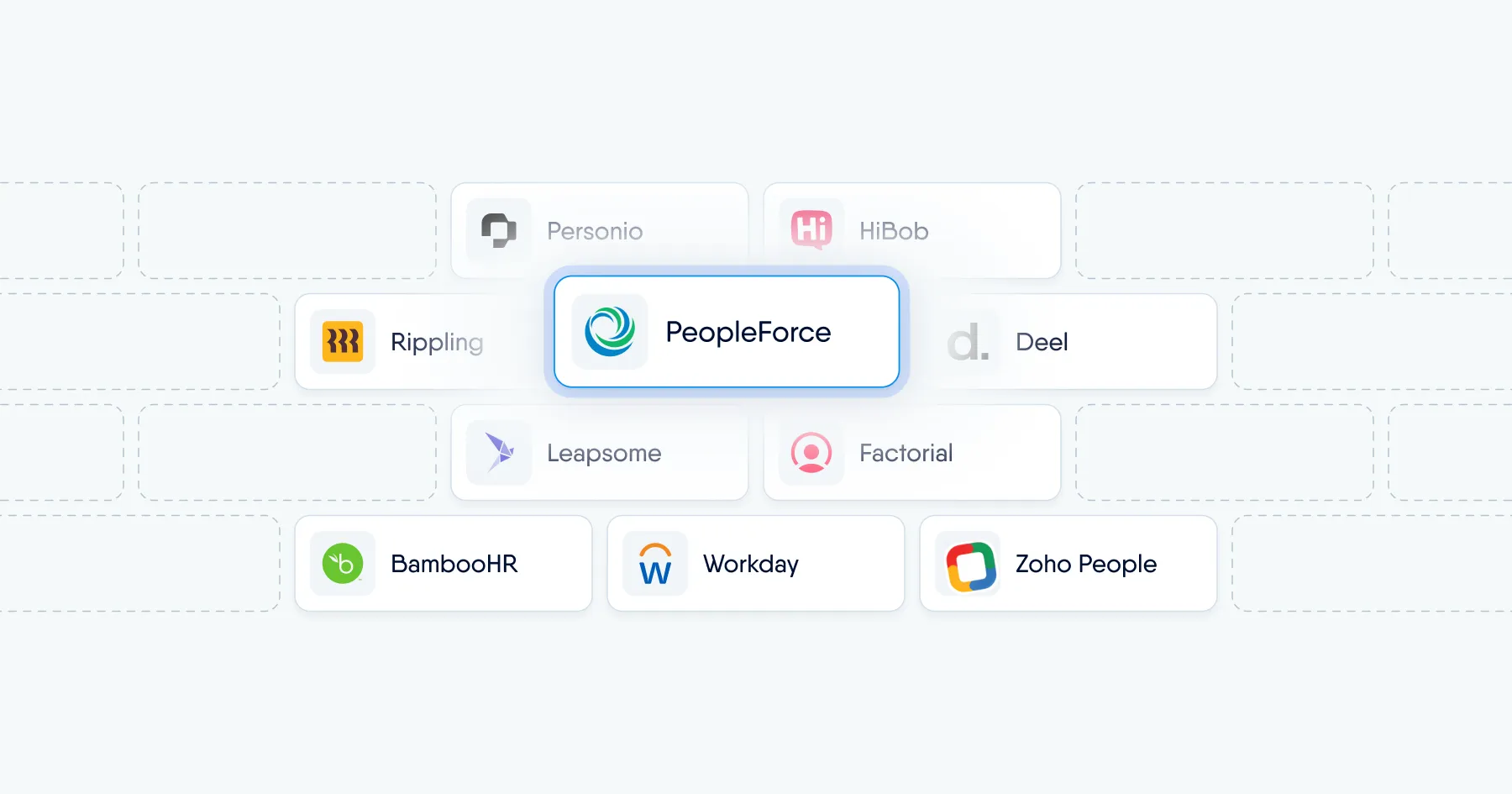
Modern team assessment methods: approaches and tools for effective HR
Employee performance evaluation is an important component of company development. Standard tools such as interviews, questionnaires, and tests are no longer surprising anyone. However, there are other methods of personnel assessment that have proven their effectiveness in practice. In this article, we will look at one of them – Management by Objectives (MBO) – and explain why you should consider adding it to your evaluation system.
1. What is management by objectives (MBO)?
Management by objectives is an approach where managers and employees collaboratively set goals for the company, departments, teams, and individual specialists. Evaluation occurs through regular tracking of progress, interim results, and final achievements.
This evaluation method is used not only to monitor employee performance but also for:
- long-term planning,
- integration of individual and team tasks with the overall company strategy,
- increasing employee motivation and engagement.
Advantages of the objectives management method
- Clear task sequencing: from the company's strategic goals to individual tasks of each employee.
- Identification of organizational shortcomings: responsibilities and authorities are distributed around established goals.
- Increase in engagement: every employee sees the impact of their work on the overall success of the company.
- Improvement in performance: clear objectives motivate achieving better results.
Example of applying MBO in practice
Let's imagine a company that has implemented management by objectives in the sales department. Each manager has been assigned personal KPIs that clearly correlate with the company's overall goal — to increase sales volume by 15% per year. Through regular assessments of intermediate results and adjustments to individual plans, the company managed to even surpass the planned targets by 5%.
How to properly formulate a goal for effective evaluation?
Proper goal setting is the key to successful use of any personnel assessment method. If the goal is vague or unrealistic, even the best tools will not deliver the expected results.
Here are three essential steps to determine an effective goal:
- Step 1. Write down your goal
Writing down your goal helps to turn it from a realm of ideas and dreams into a concrete task. This makes the goal tangible and reinforces its importance in your consciousness.
- Step 2. Check the goal against SMART criteria
To ensure effective personnel evaluation, it is important to use the SMART principle:
- Specific — the goal should be specific,
- Measurable — its success can be measured,
- Achievable — it should be realistically attainable,
- Relevant — it aligns with your objectives,
- Time-bound — it should be time-limited.
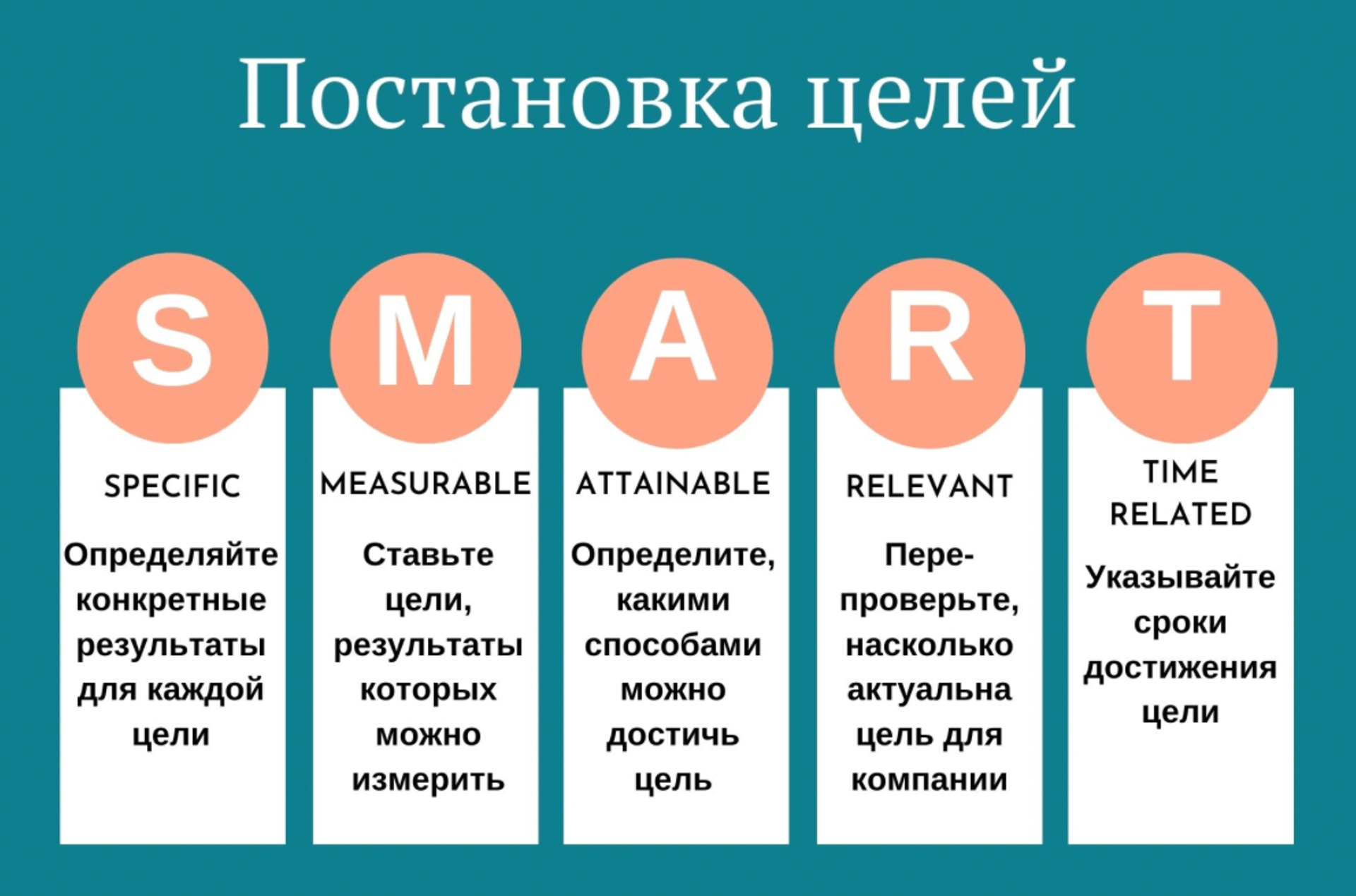
- Step 3. Keep the goal in mind.
Display the formulated goal in a prominent place – in a task manager, HRM system, personal calendar, or even on your desktop. Constant visualization will help you stay focused on what's important and strengthen your motivation.
Once you have figured out goal setting, we suggest familiarizing yourself with other methods where you can apply the knowledge you've gained.
2. Method OKR: how to effectively set objectives and key results
One of the most popular modern methods for evaluating personnel performance is OKR (Objectives and Key Results) or goals and key results. OKRs help employees and teams collaboratively formulate tasks and build clear plans with measurable success indicators.
What is OKR?
- Objective – this is an inspiring result that an employee, team, or the entire company strives for. It should be clear, motivating, and understandable.
- Key Results – these are quantitative indicators that demonstrate progress towards achieving the objective. They should be specific, realistic, time-bound, and subject to objective evaluation.
How to properly formulate OKRs?
- Formulate an ambitious yet achievable goal.
- Identify 2–5 key results that clearly reflect the path to achieving this goal.
- Ensure that the key results can be measured: with numbers, percentages, deadlines, or specific actions.
How does OKR work?
Formulate a concrete goal and measurable results (which you can quantify, for example, in percentages or numerical indicators). Set the task in your task management system or better yet, use specialized systems that have OKR management. Here, you can create a goal hierarchy: from tasks and plans of a specific employee, department, or subdivision to the company’s global objectives.
This allows you to see the picture of all tasks and promptly notice progress, missed deadlines, mismatches between tasks and employee competencies, the level of importance and impact of tasks on the company's goals, as well as the progress and development of individual specialists and the organization.
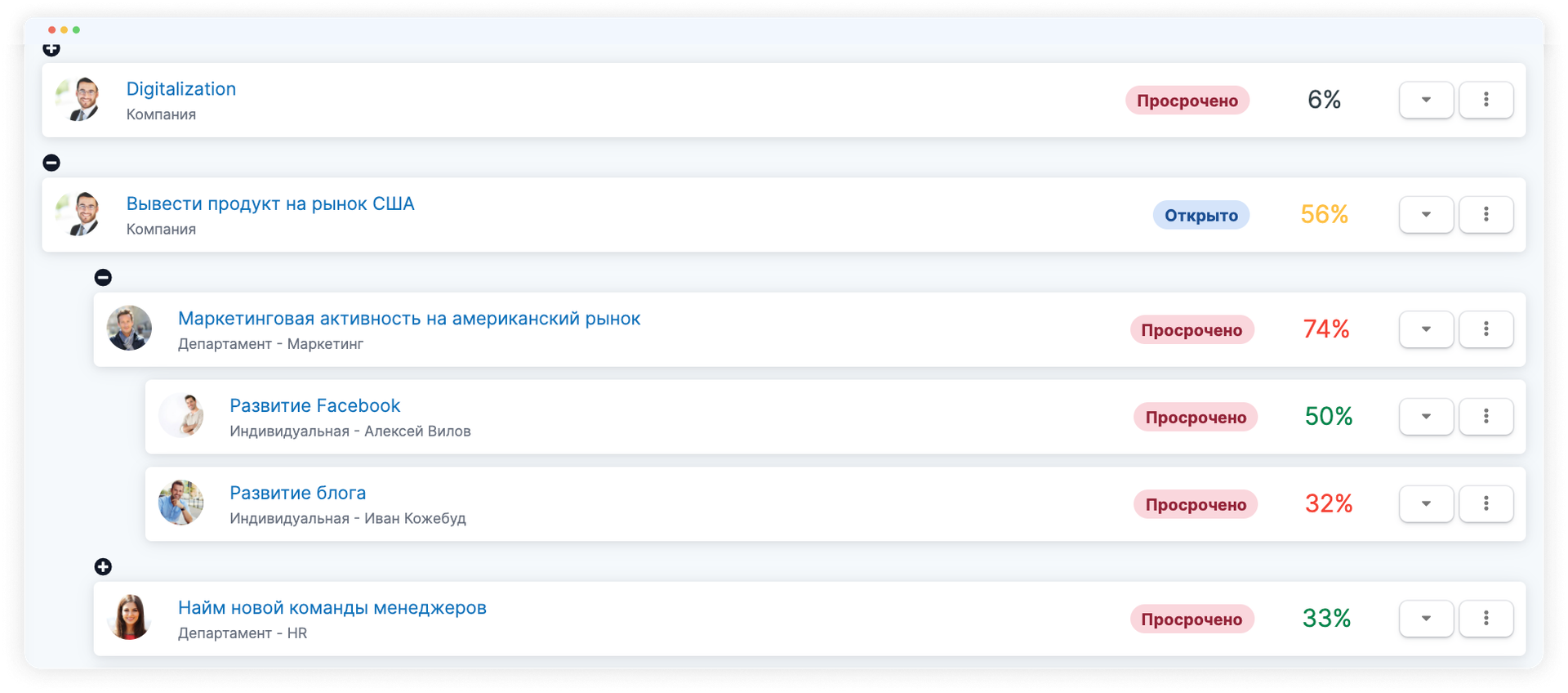
3. Performance evaluation by KPI
Key Performance Indicators (KPIs) – goals that a company plans to achieve, as well as employee productivity assessment. Company KPIs directly depend on the department, team, and employee. In other words, even the most minor task will somewhat influence the achievement of the organization's overall goals.
How to set KPIs? At the beginning of a certain period, the manager and the employee determine the goals, for example, writing 20 articles per month, generating 2000 leads per quarter. After this period ends, the manager will be able to assess how effectively the employee worked and the percentage of key indicators achieved.
4. 360-degree feedback
360-degree performance appraisal or 360-degree feedback is a multi-dimensional method of evaluating effectiveness, which assesses an employee through feedback collected from their circle of influence. At least 4 people participate in the evaluation, such as a director, colleagues, subordinates, and the employee themselves. This helps to avoid biases in assessment, which can occur when receiving feedback from just one person.
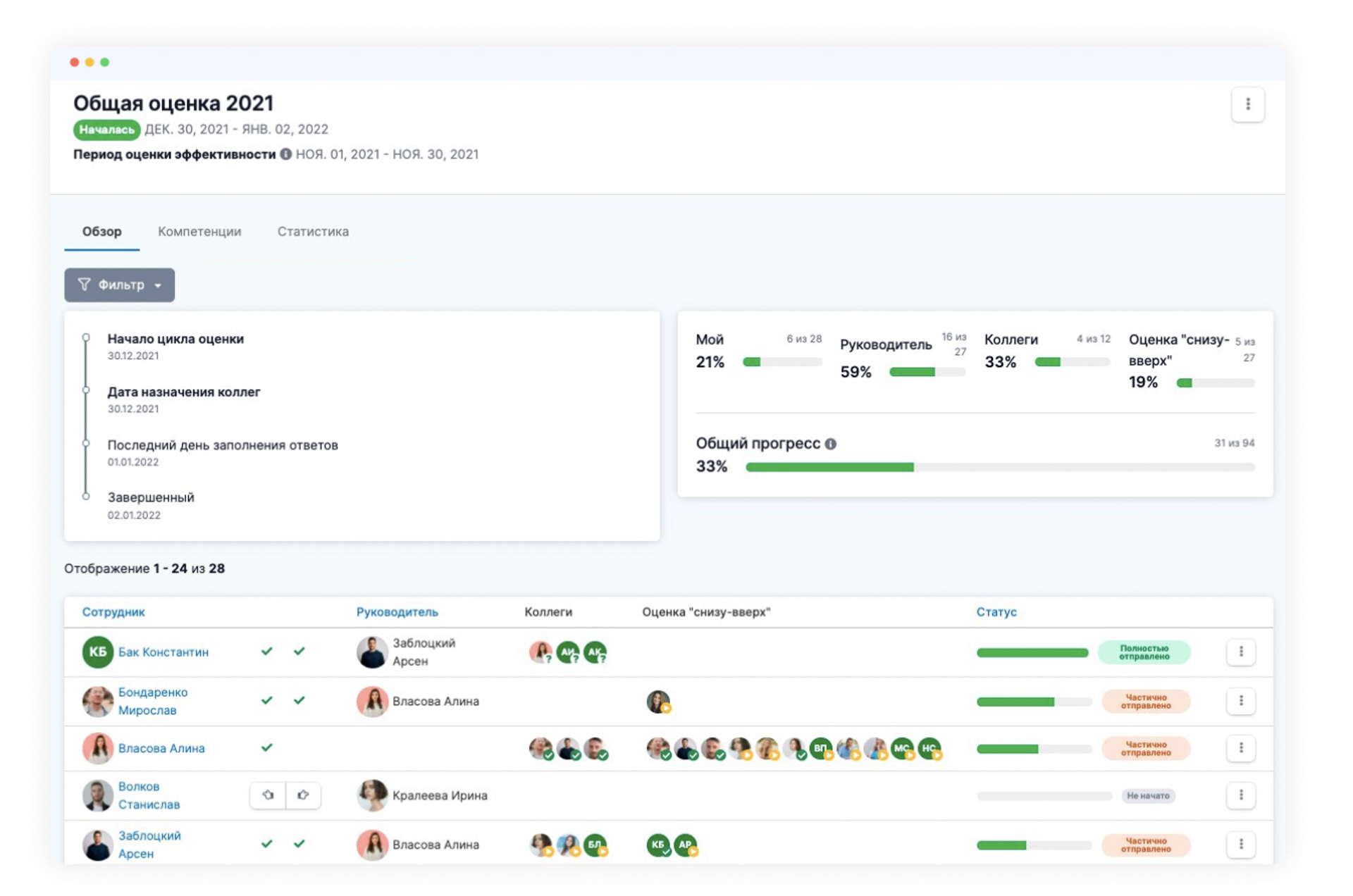
This assessment method may consist of the following components:
1. Self-assessment
An employee independently analyzes their work over a certain period, assesses how successfully they have completed their assigned tasks, and identifies their strengths and weaknesses. However, if self-assessment is conducted without formal procedures, it can be biased.
2. Manager's assessment
Employee performance reviews by managers are a traditional method of evaluation. These reviews should include individual assessments of employees assigned by supervisors, as well as an evaluation of the team or program conducted by senior managers.
3. Peer evaluations
Colleagues most often interact with the employee, and therefore can provide the most comprehensive and detailed feedback not only on the employee's competencies but also on their personal qualities, initiative, and teamwork skills. However, friendship or hostility between employees can influence the final evaluation results.
4. Subordinate's evaluation
And here, feedback is provided by the subordinate of the manager or specialist being evaluated. Such a criterion allows the manager to learn about themselves as a leader. However, reluctance or fear of retaliation can distort the evaluation results.
5. Customer feedback (optional)
The client component of this stage may include either internal clients, such as product users within the organization, or external clients who are not part of the company but regularly interact with this particular employee.
How is a 360-degree evaluation conducted?
Participants fill out pre-prepared paper questionnaires or use automated 360-degree surveys. The digital method allows for monitoring all stages of the survey process, calculating and storing results, conducting analytics, and receiving feedback. Given that assessments are conducted regularly, automation of the process will significantly save HR specialists' time, as well as reduce the amount of paper used.
5. 180-degree assessment
180-degree review — a similar method to 360-degree feedback, where the manager and the employee provide feedback. Both participants fill out the assessment form, then analyze the results and compare them with the job profile.
The method is successfully used when it is necessary to evaluate a large number of employees, without spending too much time on analysis, as well as to receive feedback, identify the employee's strengths and weaknesses, and develop a professional development strategy. The assessment should be conducted regularly; otherwise, it will not yield the expected results.

6. Assessment center
Assessment center or evaluation center — is a combination of tasks, tests, and exercises that determine the suitability of a candidate or employee for a specific position.
The assessment center is conducted by trained specialists. These can be HR managers of the company or invited professionals who ensure an unbiased and independent analysis. They conduct interviews, administer tests and questionnaires, as well as simulate specific situations, problems, or events and observe the candidates' actions. During simulation exercises, participants may be asked to join:
- group discussions;
- basket method (systematic modeling for this position's situation);
- presentations;
- role-playing games;
- psychometric tests, etc.
Microsoft, Philips, and other organizations use assessment center practices to identify future leaders.
7. Competency assessment
Assessment of competencies is an analysis of existing professional skills, knowledge, and experience in a candidate or employee and their alignment with the job requirements. 93% of top management recommend using this method for the development and strengthening of the company.
To properly assess a candidate based on competencies, it is important to first create a competency model — a set of qualities and skills that a specialist must have to perform duties in a particular position. Competencies can be divided into three main categories:
1. Corporate competencies
These are foundational skills that all employees of the company should possess, regardless of their role. They will depend on your organization's values, mission, and strategic objectives. Examples may include:
- Communication skills
- Ability to work in a team
2. Professional competencies
These skills are unique to each specific position and are determined by the nature of the activity. For example:
- For support service managers, the ability to effectively handle customer complaints and stress resilience are important.
3. Leadership competencies
These are qualities essential for leadership and managerial roles. Leadership competencies can also be important for any position where an employee is required to manage others. They include:
- Strategic thinking
- Ability to motivate the team
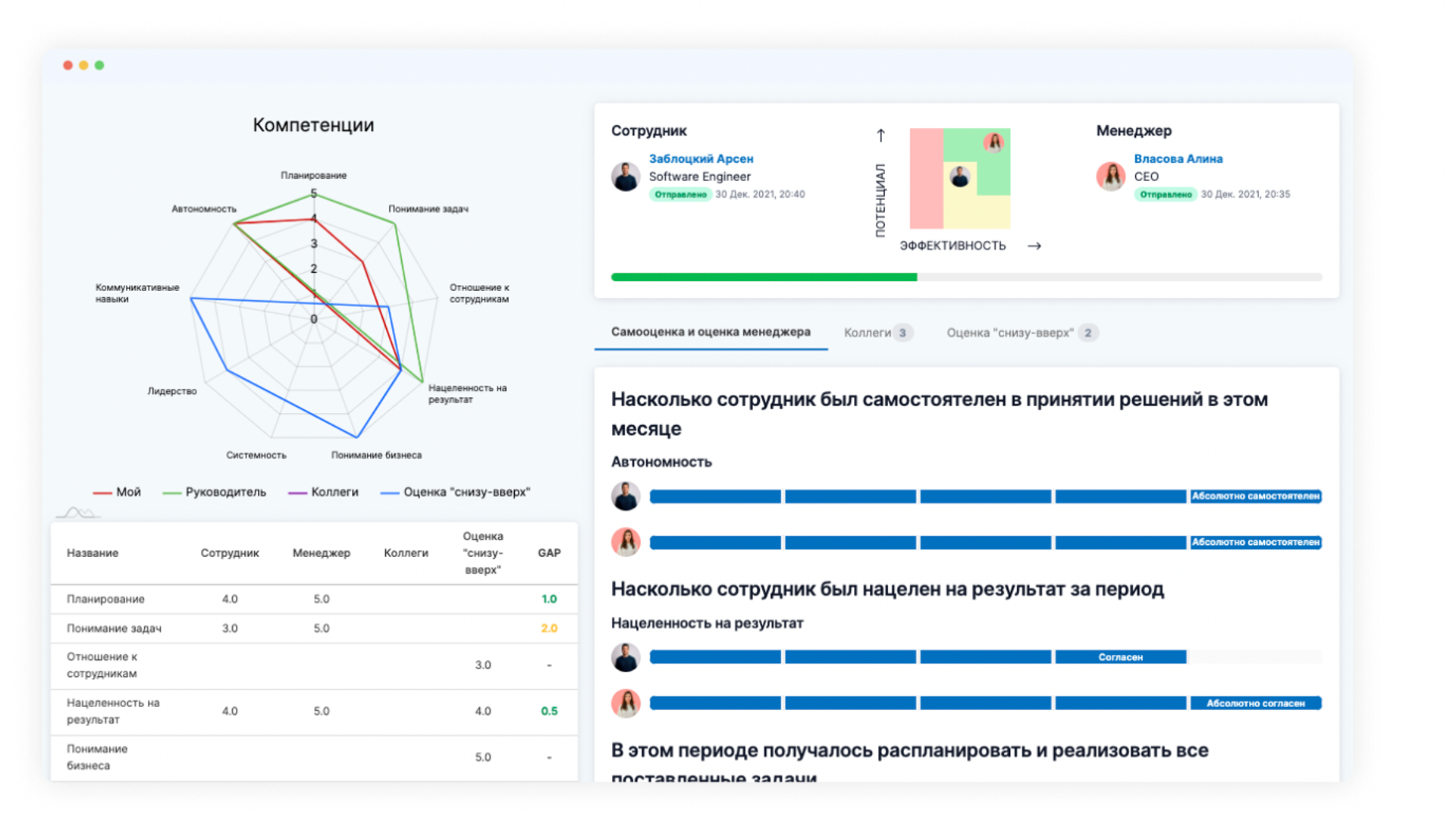
When is a competency assessment model used?
HR professionals use the competency assessment method to address various tasks, but it is most commonly used in the following situations:
- Employee recruitment
A clear list of competencies helps to find the optimal candidate more quickly, who meets the requirements of the specific position and the company's corporate culture. - Performance management
The method allows HR professionals to link each position's functional responsibilities with organizational goals, as well as identify development and training needs for employees to achieve high productivity. - Performance evaluation
The competency model is the foundation for assessing employee performance, enabling objective measurement of their achievements and identifying areas for improvement.
8. Business games
Business games or business simulators, management games — a training method for employees where an environment is artificially created to mimic a real situation or problem within an organization. Participants can work on various tasks over several days, such as launching a new product, developing a strategy, and more. All business games can be divided into categories:
- Educational — for acquiring new knowledge;
- Search — help to identify business problems and develop ways to solve them;
- Certifying — for professional growth and skill enhancement;
- Mixed — a combination of several game categories in one simulation.
Business games allow:
- find and implement a new action algorithm for solving business tasks;
- improve communication levels and unite the team;
- determine the strengths of employees and identify what is lacking;
- increase each employee's engagement in the company's tasks.
How are business games conducted?
Business games are specifically designed to suit the company's objectives, corporate culture, and goals. An unlimited number of employees from different departments or teams can participate in the simulation. The duration of the games typically ranges from several hours to a week, after which the results, behavior, and proposed solutions of the players are analyzed.
9. The "independent judges" method
The "independent judges" method involves creating a pool of questions related to the employee's professional activities. Invited experts ask these questions to assess the employee's qualifications. After testing is completed, the number of correct and incorrect answers is tallied, based on which conclusions are drawn about the employee's level of professional knowledge and skills.
10. Interview
Interviews are one of the most popular and effective methods of evaluating personnel and candidates. This tool is chosen by 90% of HR specialists when selecting candidates for specific positions.
There are several types of interviews:
- Biographical: The interviewee discusses their life journey, stages of professional and career development.
- Behavioral: The candidate answers questions that help assess how they will behave in a future work environment.
- By competencies: Questions relate to the candidate's experience and skills.
- Structured: A list of questions is prepared by an HR specialist in a way that maximally reveals the necessary qualities, experience, and knowledge of the candidate.
- Unstructured: An interview without a pre-defined plan, based on the interviewer's experience and intuition.
- Situational: The candidate is asked to solve a modeled task to evaluate their reaction in real conditions.
- Stress: The interviewer attempts to create a stressful situation to see how the candidate reacts to stress factors.
- Group: The interview is conducted simultaneously with multiple candidates.
- Collegial: Used for mass candidate evaluation when several specialists interview one candidate at the same time.
11. Ranking method
The manager evaluates employees and creates a sort of ranking: the most competent and successful employees are placed at the top positions, while those who still need to develop are positioned at the bottom. According to this ranking, the manager can make decisions about whom to dismiss and who needs additional training.
12. Method of point rating
In this method, all employee actions are graded with points that are announced to the team in advance. After a certain period, all points are summed up and the results are summarized to determine who among the employees was the most effective and who was passive.
13. Behaviorally anchored rating scales (BARS)
The Behavioral Rating Scale method assesses an employee's actions from undesirable to acceptable. As part of this testing, employees are offered options of behavior that workers might demonstrate in a specific situation.
When choosing an option, a person receives a certain number of points, which are summed up at the end. As a result, the manager or HR specialist can understand how productive the employee's actions will be for the company in a specific situation.
Errors in conducting personnel evaluation
Personnel evaluation is one of the most complex processes in the performance management system. It requires the application of a methodology that meets your business needs, the availability of qualified specialists, clear planning, and detailed analysis.
Not all organizations are able to conduct proper assessments, and as a result, approximately 90% of performance review processes are considered inaccurate. To ensure your business falls into the 10% of successful ones, it's important to avoid these common mistakes when conducting employee evaluations:
- Bias. Evaluation and feedback are often provided by individuals who may have a vested interest. To avoid this, assessments should be conducted by external specialists or automated systems.
- Negative perception. Employees may fear that participating in tests or interviews will negatively impact their careers. Therefore, it is important to clearly explain the purpose of the assessment to dispel any fears or misconceptions.
- The method does not suit the company. Before conducting an evaluation, it is essential to define the goal of the assessment and choose the most appropriate method based on this.
- Lack of feedback and development plan. One of the main objectives of evaluation is to identify an employee's strengths and weaknesses. If the results are not discussed with the specialist and a development plan is not developed, the assessment will be ineffective.
- Inflated results. Sometimes managers may inflate assessment scores as a form of motivation. To prevent this, use assessment methods involving independent experts.
- Setting goals without employee participation. If an employee is not involved in the goal-setting process, they may misunderstand the objectives, which will affect work performance.
- Avoidance of modern personnel assessment methods. Modern automated systems, such as PeopleForce, allow for effective personnel evaluation, setting clear goals, and quickly providing feedback.
Perform: effective personnel assessment
How do you imagine the staff evaluation process: piles of paperwork with surveys and tests, hundreds of notes and stickers, a packed Google Calendar? You can go that way. 🤯 Or you can automate the staff evaluation processes. So that you set it up once and conduct staff assessments quickly and organized without paper hassle. The module provides solutions for methods:
- 180 and 360 degrees. Here, managers and HR professionals can plan assessments, create surveys accessible to all participants in the process, quickly and easily collect results, analyze them, and provide timely feedback to employees.
- OKR – goals and key results. Build the correct task hierarchy: from company objectives to individual employee tasks. Track progress, results, and productivity of each employee or team at any convenient time for you.
- 1-on-1 – regularly hold personal meetings with employees to assess not only effectiveness but also engagement, motivation, and loyalty. With the Perform module, you can plan meetings, and the system will remind you in time; create notes to share with employees, develop plans, and track task results.
Employee evaluation can be a complex, time-consuming, and costly process for both managers and employees. But it pays off handsomely, because as Steve Jobs said: “ The right hire – is the key to success in any venture”. And we are confident that you want to work only with the best professionals who share views on development and success in business.
The HRM platform PeopleForce will help you achieve this goal. Fill out the form and get a free trial period.
Recent articles
10 recruitment tasks you can automate with PeopleForce
Recruitment requires strategy, and the right software makes it easier. PeopleForce’s ATS, pipeline management, and bulk actions simplify workflows and save recruiters time.
How Reply.io digitized HR processes and recruiting with PeopleForce
In this case study, we share why an HRM system is crucial for a modern company and how exactly PeopleForce facilitates Reply.io's daily work.
Increasing the effectiveness of a remote team through 1-on-1 meetings
Elly Borovska, Head of People at NewHomesMate, helps us understand why 1-on-1 meetings are an effective way to enhance efficiency and build relationships with employees.

